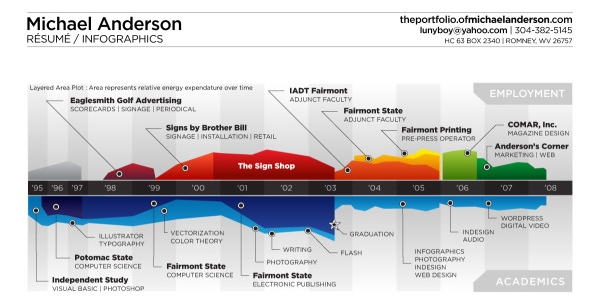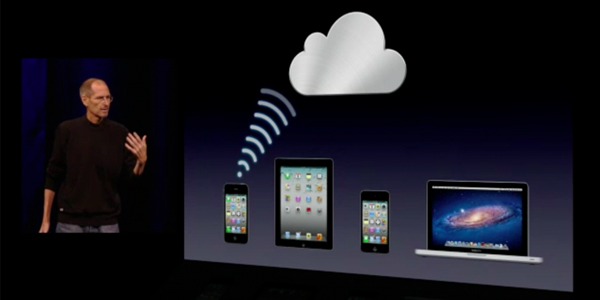Infographics are an increasingly popular way to get other sites to link back to your site (“Linkbait”) – which is great for your Search Engine Optimization (SEO) efforts. Infographics can go “viral” because information presented via a well-crafted infographic is often very compelling – both informing and entertaining the audience – and thus it can lead to winning a number of links.
Still the question must be asked, are infographics only good as link-bait? Or should we be thinking outside the box a little and occasionally use them for other purposes as well? If you have the internal capacity to produce infographics, then here are three unique ways to use infographics beyond traditional “Linkbait”.

Since selling products and services to past customers is much easier and cheaper than finding new customers, many companies invest resources in client communications. All too often, these communications are formulaic and fail to engage the reader. By including an infographic in your client communications from time to time, you can improve your client’s engagement. An engaging report or newsletter is much more likely to be read and understood by your customers. This ease of comprehension and higher engagement will be impressive and lead to more referrals and new business.

Most designers have portfolios that showcase their work – but this concept can work for professionals in other industries as well. Resumes can be pretty boring and it can be hard to convey information that is engaging. Including an infographic in your resume (likely on a second or third page) can creatively solve this – either one about your experience or skills etc. or one that you helped develop for a previous employer. It’s definitely outside the box but it could really make your resume stand out – and in this economic environment that is more important than ever.

Keeping employees motivated and engaged is an ongoing battle most managers grapple with every day. Often times, important memos or emails are not read or the organization-wide mission and values are unclear to some. The occasional infographic at work can go a long way helping overcome these issues.
It can also help create a fun, engaging atmosphere where people love to work. Infographics are wildly popular now because they work so well at engagement – so why limit their use to pursuing buzz and links on the Internet? These are just a few examples of how you can use infographics in creative and useful ways that go beyond typical “Linkbait” – but whenever engagement with your audience is desired this tool should be considered.
We hope you enjoyed this article/tips! We would love to hear your opinion and feedback, so please don’t hesitate to comment below. For more useful content please don’t forget to subscribe to the RSS-feed and follow Inspirationfeed on Twitter + Facebook! If you enjoyed the following article we humbly ask you to comment, and help us spread the word!
Still the question must be asked, are infographics only good as link-bait? Or should we be thinking outside the box a little and occasionally use them for other purposes as well? If you have the internal capacity to produce infographics, then here are three unique ways to use infographics beyond traditional “Linkbait”.
1) Use Infographics in Client Communications

Since selling products and services to past customers is much easier and cheaper than finding new customers, many companies invest resources in client communications. All too often, these communications are formulaic and fail to engage the reader. By including an infographic in your client communications from time to time, you can improve your client’s engagement. An engaging report or newsletter is much more likely to be read and understood by your customers. This ease of comprehension and higher engagement will be impressive and lead to more referrals and new business.
2) Include Infographics on Your Resume

Most designers have portfolios that showcase their work – but this concept can work for professionals in other industries as well. Resumes can be pretty boring and it can be hard to convey information that is engaging. Including an infographic in your resume (likely on a second or third page) can creatively solve this – either one about your experience or skills etc. or one that you helped develop for a previous employer. It’s definitely outside the box but it could really make your resume stand out – and in this economic environment that is more important than ever.
3) Use Infographics Internally with Employees

Keeping employees motivated and engaged is an ongoing battle most managers grapple with every day. Often times, important memos or emails are not read or the organization-wide mission and values are unclear to some. The occasional infographic at work can go a long way helping overcome these issues.
It can also help create a fun, engaging atmosphere where people love to work. Infographics are wildly popular now because they work so well at engagement – so why limit their use to pursuing buzz and links on the Internet? These are just a few examples of how you can use infographics in creative and useful ways that go beyond typical “Linkbait” – but whenever engagement with your audience is desired this tool should be considered.
We hope you enjoyed this article/tips! We would love to hear your opinion and feedback, so please don’t hesitate to comment below. For more useful content please don’t forget to subscribe to the RSS-feed and follow Inspirationfeed on Twitter + Facebook! If you enjoyed the following article we humbly ask you to comment, and help us spread the word!
3 Unique Ways to Use Infographics Beyond “Linkbait” | inspirationfeed.com

0 comments:
Post a Comment